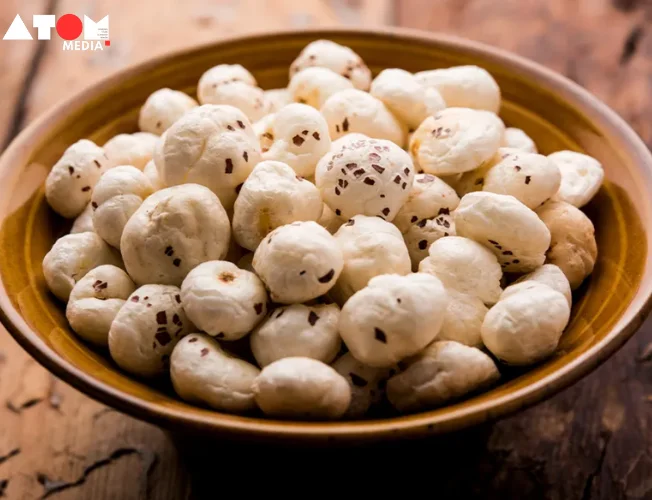Makhana, a crunchy nut-like seed enjoyed in India for centuries, has recently gained international recognition as a “superfood.” Industrialist Anand Mahindra recently shared his love for this healthy snack, sparking a conversation about its journey from a local favorite to a global phenomenon.
Makhana’s Humble Origins
Makhana, also known as fox nut or lotus seed, comes from the Euryale ferox plant, a aquatic species native to South Asia. While the exact origins of makhana cultivation remain unclear, evidence suggests it has been a part of the Indian diet for millennia. Traditionally grown in the Mithilanchal region of Bihar, makhana cultivation has been a source of livelihood for generations of farmers who use specialized techniques to harvest the seeds from underwater pods.
A Nutritional Powerhouse Gains Recognition
Makhana boasts an impressive nutritional profile. Rich in protein, fiber, and low in fat, it offers a healthy and satisfying snack option. Additionally, it contains essential minerals like magnesium, potassium, and phosphorus, contributing to overall well-being. While always valued for its nutritional content in India, makhana’s rise as a superfood can be attributed to several factors.
The Rise of Health Consciousness
The global health and wellness movement has fueled a growing interest in nutrient-rich foods. Consumers are increasingly seeking out natural, healthy alternatives to processed snacks. Makhana perfectly fits this trend, offering a delicious and convenient option for health-conscious individuals.
Social Media and Global Accessibility
The power of social media has played a significant role in introducing makhana to a wider audience. Platforms like Instagram and Twitter have become avenues for sharing healthy recipes and food trends. Images and videos showcasing makhana’s versatility and health benefits have captured the attention of international consumers.
Innovation and New Products
The growing popularity of makhana has spurred innovation in the food industry. Manufacturers are developing new and exciting ways to enjoy this ancient food. Flavored makhana snacks, ready-to-eat mixes, and even makhana flour have emerged in the market, catering to diverse preferences and dietary needs.
Anand Mahindra Joins the Conversation
Industrialist Anand Mahindra’s recent social media post endorsing makhana further amplified its growing popularity. Mahindra, known for his active online presence, shared his love for this “chai-time” snack, sparking discussions and encouraging others to explore its benefits.
What do Users Think?
Mahindra’s post generated a wave of comments from social media users, highlighting the growing appreciation for makhana. Many users echoed his sentiments, praising its taste and nutritional value. Others shared creative ways to incorporate makhana into their diets, suggesting recipes and flavor combinations. The overall response reflected a shift in perception, with makhana no longer seen as a simple snack but as a versatile and healthy ingredient.
The Future of Makhana: A Global Superfood?
With its unique combination of taste, health benefits, and growing global recognition, makhana has the potential to become a true superfood. Increased agricultural production, innovative product development, and continued consumer interest are key factors that could solidify its place in the global health food market. As awareness about makhana continues to spread, it may well become a staple snack enjoyed not just in India but around the world.
Beyond the Snack: Makhana’s Cultural Significance
Makhana holds a special place in Indian culture beyond its culinary uses. It features in traditional rituals and offerings, symbolizing prosperity and fertility. The intricate process of harvesting and drying the seeds has been passed down through generations, preserving a unique cultural heritage. As makhana gains global recognition, it carries with it a rich history and cultural significance that deserves to be acknowledged.
Read more: Marketing News, Advertising News, PR and Finance News, Digital News





